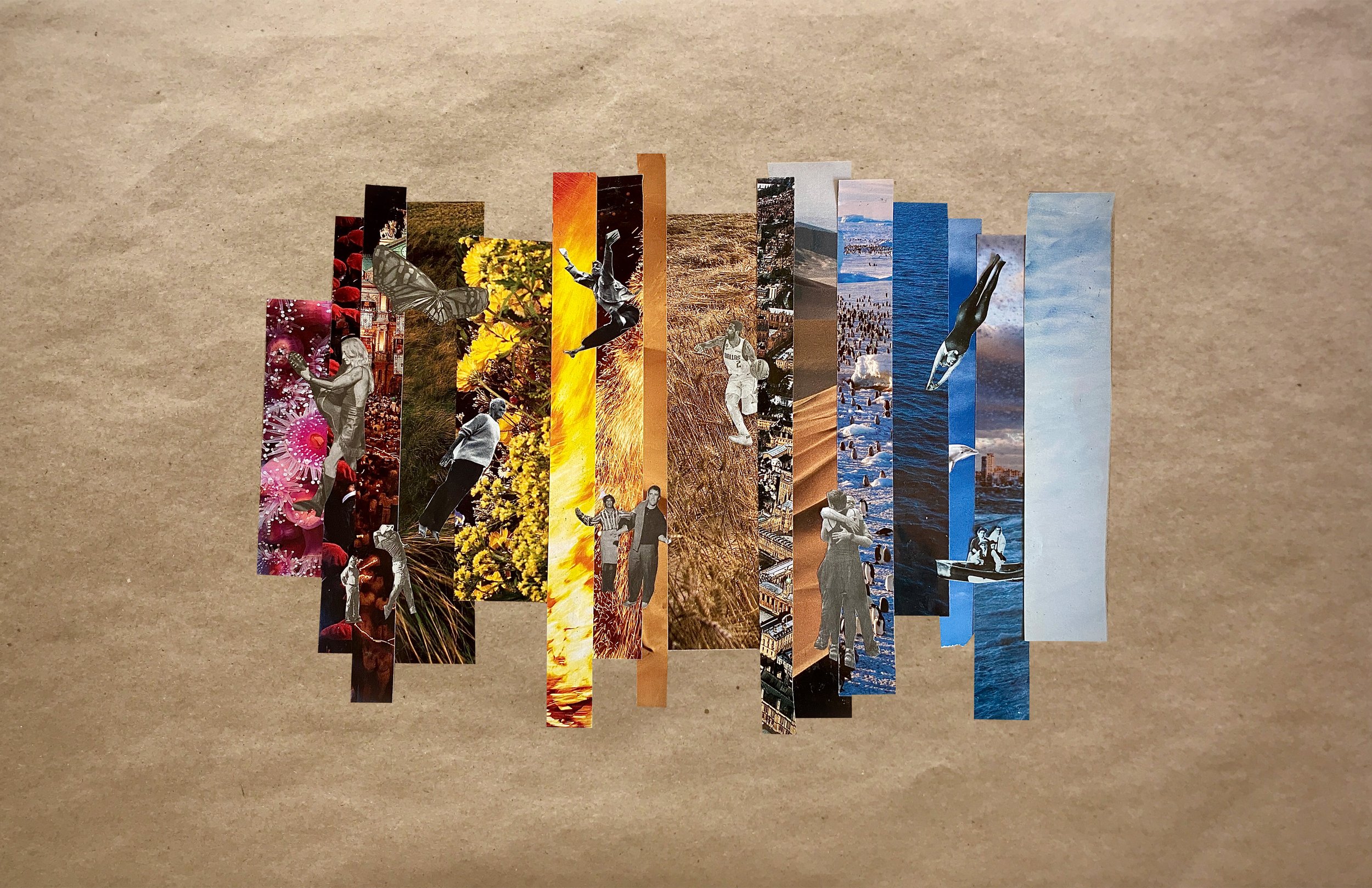
A Trauma-Informed Design Process for Transitional Housing
The June 9th Presentation
For my master’s project in Landscape Architecture at the University of Oregon, I researched trauma-informed design at a transitional housing community in Eugene, OR, called Everyone Village. During the 2022-23 year, I co-facilitated a series of participatory design projects at Everyone Village that resulted in a conceptual site plan, some personal and community garden spaces, and an implementation plan for a transitional employment program.
For my master's project defense, I invited the audience to participate in the presentation through a Question + Answer (Q +A). While non-traditional, the format was reflective of my non-linear, cyclic design process—a process that I adapted from the indigenous author and researcher Margaret Kovach. This process has 6 distinct phases—decolonizing ethics, researcher preparation, research preparation, gathering knowledge, meaning-making, and giving back. I decided to present in a way that is true to this method. I hope that through this presentation you will come to see the benefits and opportunities of this approach.
Presentation Agenda
The outline below provides time stamps for the various parts of the presentation for easier browsing of the content.
01:52 The Intentions
10:07 The Introduction
18:58 The Q+A
58:34 The Feedback
Setting the Stage
Adapted from The Circle Way, I invited the audience to start by writing down an intention for the next hour to help ground us in the space together. The intentions were then collected in a basket and added to the center display to remind us of our intentions throughout the presentation. We were gathered in a semi-circle around the presentation screen with a rug, flowers, soft lights, and the basket of intentions at the center.




























The Bouquets Explained
For the presentation, my brother and friend provided vibrant bouquets to share beauty and intention at the center of the room. Each bouquet was representative of different intentions and values, explained below.
“The largest is a bouquet of crimson-red roses and an orange-pink rose that represents family. Family can be a little thorny at times but still beautiful. And the orange rose represents dad specifically ‘cause Aunt Natalie grew the rose at her house and Meredith saved the rose when they were selling the house. She grew them and from the cutting, she gave me a plant, and that rose bloomed for this presentation.”
“And then the second bouquet represents Robin Wall Kimmerer and professional life. She was an inspiration to me. She went to school because she wanted to know why Douglas Astor and Goldenrod were so beautiful because they always grow together in a field. So, Aster and Goldenrod from our garden.”
“The third one represents the world because it includes native and non-native plants. The combination of sage, raspberry, western sword fern, and flowering red current, and then with those there were some fragrant mint and lemon balm.”
— Sam Yerke
“The fourth bouquet was gifted by a dear friend of mine. It is a collection of beautiful, bright pink peonies. This bouquet represents friendship and the beauty and sweetness of community life. ”
— Rosie
The Question + Answer (Q+A)
For the Q+A portion of my presentation, I organized the questions by the phases in my process. On the other side of the questions document provided, I included space for feedback. Whether an appreciation, a coaching tip, a resource, or an evaluation of my process or designs, I welcomed it. I will be continuing this work at Everyone Village post-graduation so the feedback provided not only helps me but also the Everyone Village community. Thanks to everyone who participated in the Q+A and provided feedback!
The Feedback
“Loved having a handout to annotate, kept me actively engaged in the presentation.”
— Participant
“There are multiple ways to add feedback and give consent.”
— Participant
“Love that the website is organized through questions! Very interactive. And I loved that we jumped around so much! It really emphasized the cyclicality of your work.””
— Participant
“I love the style of your visuals and the collage-y look.”
— Participant
“I learned so much about the connections between shelter settings and the brain’s chemistry. Thank you.”
— Participant
“I feel so transformed by your conversational presentation style. I have been dancing around an understanding of “corporeal knowledge sharing” over the past year and being here in this space was what made it really click for me. I am so grateful to have gotten to learn by being in this conversational presentation with you.”
— Participant
“I love the way you’ve bridged indigenous and trauma-informed concepts of consent and reflexivity.”
— Participant
““Give people what you have and people will adapt.” This was such a powerful statement, especially when inundated with messages of not being enough or feeling incapable, what a revolutionary thing to allow yourself, whoever you are, to embrace. I also am so excited to learn from this format of presentation and co-authorship/creation. And your presentation was such a good embodiment of this – not only did we adapt, but you allowed us to grow!”
— Participant
“Your website is so freaking cool and well thought out and prepared and thorough.”
— Participant
“A good design process is non-linear. The problem is that communicating and story-telling are always constrained by linearity/time/sequential logic. You did a great (amazing) job bridging the gap between non-linear design and non-linear storytelling. Well done.”
— Participant
“I am so glad you are here in Eugene and in this world doing this work – it gives me chills. Getting to learn about your project made my nerves move in so many ways. Tey wanted to jump and dance and also we so at peace and grounded.”
— Participant
“Bad ass.”
— Participant
Rosie Yerke
“Offer what you have, and people will adapt what they need from that.”
Rosie Yerke



